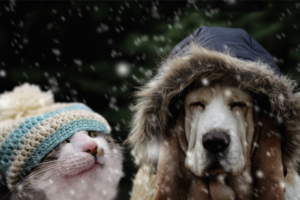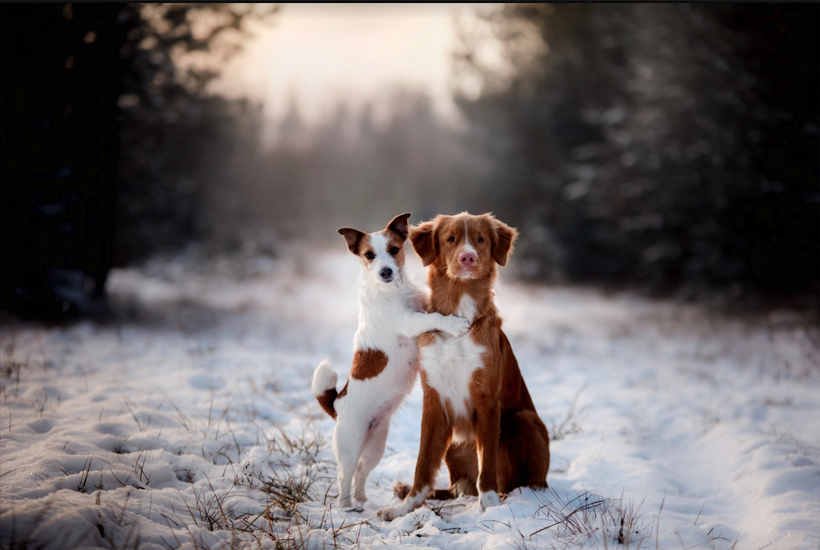Winter is coming faster than you may think! While you have likely enjoyed watching your dog zoom around your backyard all summer, making the most of all the bright sunny days, it’s important to acknowledge that, unfortunately, it doesn’t last forever.
Your dog is might still want to spend time outdoors when the cold weather and snow (depending on where you live) hits. And, it’s important that they do spend plenty of time outside. Just because it’s colder out doesn’t mean that getting your dog the proper amount of exercise and fresh air is any less important.
Since it’s not as easy or comfortable to spend quality time outdoors during the winter, certain precautions need to be taken. However, you have nothing to worry about! To ensure that your dog is comfortable and protected from the harsher winter climate, we’ve compiled a few key items to take into account.
With a little extra preparation now, you and your dog will be ready to have the best winter ever!
Paw Protection
When it is colder and when there’s snow on the ground, one of the most vulnerable parts on your dog is its paws. If exposed to snow, water, and ice for too long, your dog’s paws can become frozen, which can quickly turn into some serious problems.
One other thing that many people don’t take into consideration is salt. During the winter months, your dog is much more likely to come in contact with salt that people are spreading on roads and sidewalks to melt away snow. This can burn the pads on your dog’s paws, so it’s equally as important to take this into consideration.
To help avoid the harmful effects of frostbite and salt irritation, there are a couple of things that you should invest in. Dog booties can be very helpful since they completely cover your dog’s paws and act as a protective barrier between your dog and the cold. However, it’ll take some time for your dog to get used to them, so don’t wait until the last minute to introduce them into your dog’s routine. Also, make sure you get the right size–not too tight and not too loose.
A lesser known, but extremely effective solution is balm for your dog’s paws. These do an excellent job at protecting your dog’s paw. Also, many of the products on the market are made with natural ingredients.
Keep Them Warm and Still Have Fun
Many pet owners are under the assumption that their dog’s fur coat is sufficient enough at keeping their dog warm while they’re outside. However, this is not always the case, especially for certain breeds that are not meant for colder environments. It often makes sense to buy an additional coat to clothe your dog with during the winter months. Mammals generally are not the best at regulating heat in colder weather, and when your dog’s fur gets wet, all bets are off when it comes to its ability to stay warm.
It’s better to play it safe and give your dog something that’ll keep them dry and warm this winter while still enjoying the benefits walk time.

Take Safety Precautions
Other than keeping your dog warm and protecting your dog’s paws, there are several other things that should be done to keep your dog safe.
For instance, the daytime is significantly shorter in the winter. This means that there are likely going to be more times when you and your dog are outside when visibility is limited. If you live on a busy street, this can be dangerous. A reflective vest or leash for your dog can go a long way to make sure that you’re seen by drivers.
One other thing to look out for is antifreeze on the ground. Your dog may be curious to sniff this up if there’s a lot of it leaking on the ground from a parked car. If ingested, you need to get your dog to the vet immediately as antifreeze can be poisonous to your dog.
In addition to these safety precautions, your dog’s nose may get dry during the winter months, just like many of us humans. Be sure to look into dry nose prevention tips and tricks to make sure your dog is not suffering from the harsh winter months.
Do What It Takes To Keep Your Dog Safe
As a dog owner, you have an important responsibility to be proactive and keep your dog safe. However, it doesn’t need to be difficult or overly complicated. With a little extra planning and thinking ahead, you and your dog will be more than ready for the upcoming winter months!




